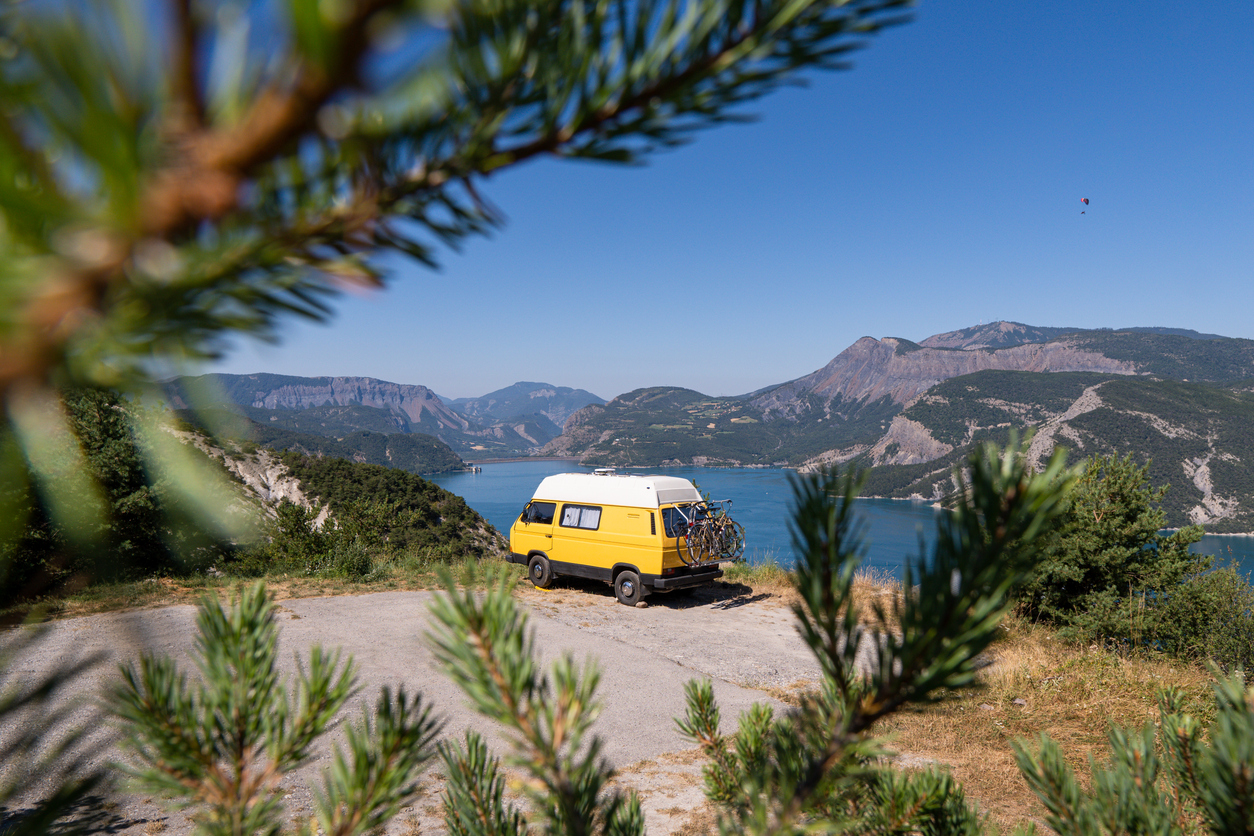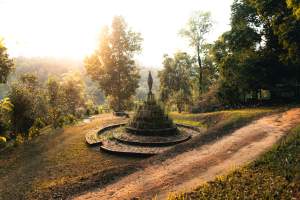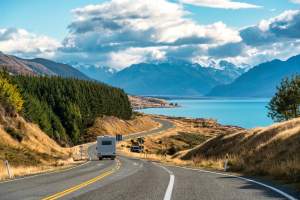
In a world where every second seems to come with a notification, a headline, or a ping, more people are craving something different — silence, simplicity, space. The off-grid movement isn’t just about going somewhere remote; it’s about reconnecting with yourself by disconnecting from everything else. It’s for those moments when you need to reset, unplug, and remember what it feels like to just be — without Wi-Fi, without traffic, without anyone trying to sell you anything.
Whether you’re feeling burnout creeping in or just want a deep breath of raw nature, these off-grid escapes deliver wildness and wonder in equal measure. No resorts. No itineraries. Just places that put you back in sync with something ancient, grounding, and real.
Here are some of the best wild places for the soul — places where going off-grid doesn’t feel like isolation, but liberation.
1. The Faroe Islands, Denmark (Technically)
Rugged, windswept, and hauntingly beautiful, the Faroe Islands sit in the North Atlantic between Norway and Iceland. Though officially part of the Kingdom of Denmark, they feel like their own isolated universe — a place of fog-covered cliffs, thundering waterfalls, and tiny villages clinging to green hillsides.
Cell service is spotty in many areas, and Wi-Fi often drops out. That’s a feature, not a bug. This is a place to hike, to stare out at the sea, and to feel deliciously small in the best possible way. Tourism is still light here, especially outside of summer. Bring boots, layers, and your thoughts.
2. Wrangell–St. Elias National Park, Alaska
You want wild? Alaska delivers. Wrangell–St. Elias is the largest national park in the U.S., and yet almost no one goes there. It’s bigger than some countries, and much of it is entirely undeveloped. No roads. No lodges. Just massive glaciers, snow-covered volcanoes, and valleys that feel untouched by time.
Base yourself in McCarthy or Kennicott — two tiny towns that barely qualify as towns — and explore from there. You’ll need to be self-sufficient, but the payoff is complete silence and endless skies. It’s the kind of place where you look around and realize: this is what the planet looked like before people.
3. Tassili n’Ajjer, Algeria
Located deep in the Sahara, Tassili n’Ajjer is a surreal landscape of eroded sandstone formations and prehistoric cave art — a silent world carved by wind and time. It’s a UNESCO World Heritage site, but it feels completely off the grid because it is.
Getting there takes effort. There’s no glamping scene or trendy cafés — just vast desert, ancient stories etched in stone, and a silence so profound it echoes. You’ll likely travel with a local guide or Tuareg caravan. It’s raw, intense, and unforgettable.
4. The Knoydart Peninsula, Scotland
Scotland has no shortage of remote places, but the Knoydart Peninsula may be its best-kept secret. It’s not connected to the UK’s road system, meaning you can only get there by hiking for miles or taking a ferry.
Once you arrive, there’s a tiny community, a single pub, and the kind of peace that can only be earned. Hike into the hills, spot deer, soak up the misty quiet, and sleep in a bothy (Scotland’s rustic mountain shelters). This is off-grid in the most poetic way — a place for introspection, not interruption.
5. Simien Mountains, Ethiopia
This high-altitude region in northern Ethiopia is jaw-dropping and largely untouched by mass tourism. Jagged peaks rise above deep valleys, and wildlife like gelada monkeys and Ethiopian wolves roam freely.
Villages here are accessible only by foot or mule. There are no cities, no roads, and no noise — just mountains and moments. Treks through the Simiens are physically demanding but spiritually refreshing. Nights are quiet, skies are full of stars, and the pace of life slows to match the rhythm of the land.
6. Patagonia’s Aysén Region, Chile
While Torres del Paine grabs headlines, Patagonia’s Aysén region remains the wilder, more remote sibling — and that’s exactly why it’s worth going. Accessible via the Carretera Austral (one of the most scenic drives in the world), Aysén offers dramatic fjords, glacial lakes, and untamed forest with barely anyone around.
You’ll need to be comfortable with dirt roads, basic lodging, and unpredictable weather. But the solitude is unmatched. It’s the kind of place where you can go days without speaking — not out of loneliness, but because the land fills the silence for you.
7. Lofoten Islands, Norway (in Winter)
The Lofoten Islands are dramatic year-round, but winter strips away even the minimal tourism that trickles through in summer. With snow-covered peaks rising from the sea and small fishing villages nestled in quiet coves, it feels like stepping into a painting.
Daylight is short, but the dark brings something rare: the Northern Lights. These islands are perfect for reading, reflecting, and remembering how good simplicity can feel. Most cabins are off-grid or semi-off-grid, powered by wood stoves and surrounded by nothing but nature.
8. The Australian Outback (Arnhem Land, Northern Territory)
While parts of the Outback have become Instagrammable detours, regions like Arnhem Land remain fully untamed. This Indigenous-owned territory is rich in culture and sacred landscapes, with ancient rock art, red earth, and crocodile-filled rivers.
Access is limited and requires a permit, but that’s part of the point. You’re not just going off-grid — you’re entering a place where the land has never been fully claimed by modernity. It’s humbling, often hot, and completely unforgettable.
9. The Brooks Range, Alaska
Yes, Alaska deserves two entries. The Brooks Range, far north above the Arctic Circle, is one of the most remote mountain ranges on Earth. This is not for the casual traveler. You’ll need a bush plane just to reach a trailhead, and from there, it’s you, the tundra, and whatever you brought with you.
There are no marked trails, no cell towers, no amenities. It’s pure, unfiltered wilderness. For those prepared to handle it, the Brooks Range offers not just an off-grid experience, but a primal one. This is the kind of trip that changes how you see the world — and yourself.
10. The Gobi Desert, Mongolia
Vast, stark, and wildly underrated, the Gobi Desert offers a sense of isolation that’s difficult to describe. Nomadic herders still live here as they have for centuries, and the landscape changes from sand dunes to rocky canyons to grassy steppes without warning.
Stay in a ger (yurt), eat fresh mutton stew cooked over an open fire, and let the silence reshape your thoughts. There’s no Wi-Fi, no city lights, and no distractions. Just sky, wind, and the occasional camel passing in the distance.
How to Prepare for an Off-Grid Escape
Going off-grid can be rejuvenating — or frustrating — depending on your expectations. Here’s how to make sure it’s the former:
- Set your out-of-office: Don’t pretend you’ll check email every day. Plan to disconnect completely, and let others know.
- Go analog: Bring a notebook, a paper map, and a physical book. Digital detoxing works best when you leave the tech behind.
- Pack smart: Whether it’s water purification tablets or thermal base layers, your packing list matters more when you’re miles from a store.
- Respect the local rhythm: Off-grid places often come with slower service, fewer choices, and minimal infrastructure. Embrace the simplicity.
- Leave no trace: These wild places stay beautiful because people tread lightly. Be one of those people.
We weren’t built to be constantly connected. Notifications aren’t nourishment. At some point, you need to get out — way out. Off-grid escapes offer more than scenic views or peace and quiet. They offer a chance to remember who you are when the noise stops and the world slows down.
Whether it’s a windswept peninsula in Scotland, a remote stretch of desert in Africa, or a forgotten corner of Alaska, the message is the same: stillness is a luxury, and it’s one that doesn’t have to cost much. All it takes is the decision to go — and to let go.







